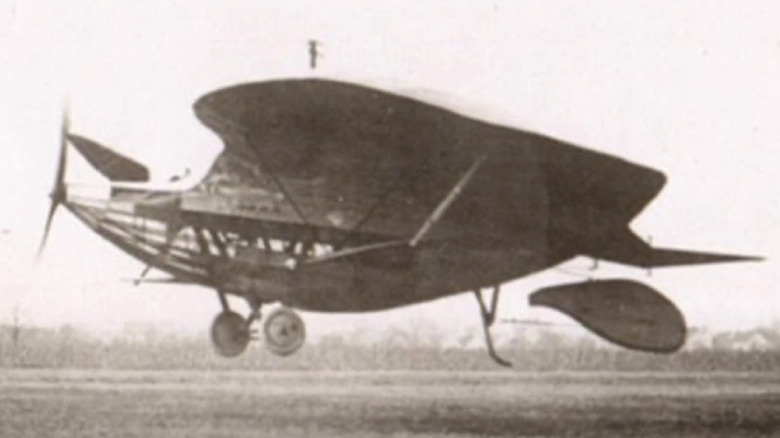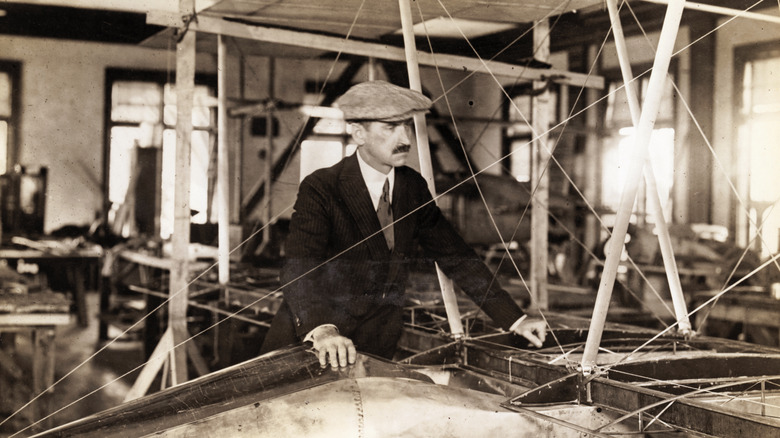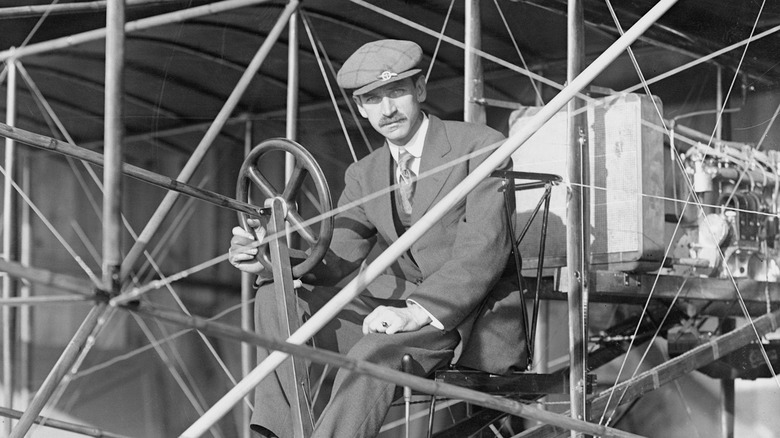Is The Curtiss Goupil Duck The Ugliest Aircraft In History?
The ability to fly has long captivated man, so when the Wright Brothers came along and achieved powered flight on Dec. 17, 1903, with their Wright Flyer, mankind could now travel the skies. In the following decades, hundreds of thousands of planes would be built, with over 68,000 being produced during World War I alone, with a staggering amount of variation in the design of these craft.
The design and look of a plane speak volumes with the old aviation phrase that if an airplane looks right, it'll fly right, holding great sway. There are multitudes of aircraft that are considered iconic planes ranging from the classic civilian Cessna 172 to the military's extremely powerful fighter jet, the F-35 Lightning II. These planes are each visually distinctive, owing some of their designs to efficiency. But what of those planes whose looks are odd if not ugly? Perhaps the greatest among that dubious group is the Curtiss Goupil Duck.
Rise of the Duck
The Curtiss Goupil Duck is the result of the work of two aviation pioneers. The original designer for the Duck is the French engineer Alexandre Goupil. He designed and tested a two-winged sesquiplane in 1883 that was steam-powered and which would serve as the inspiration for the eventual Curtiss Goupil Duck. Goupil's work with this design and his extensive notes on matters of flight would be published a year later in the book La Locomotion Aérienne.
This book came to the attention of an aeronautics pioneer and Wright brothers' rival, Glenn Curtiss. He had been in a legal battle with the Wrights over who invented and owned the patent to the principle of lateral control . This is the technique by which a plane's side-to-side roll is controlled and allows for stable flight. Curtiss believed Goupil's design was a way to show it predated the Wright Brothers plane. So he built the Duck at his Buffalo, New York, plant and on Jan. 19, 1917, powered by a Curtiss OXX-6 engine. And the plane took to the skies. Though showing powered flight and that lateral control was not dreamt up by the Wright Brothers with the Duck, Curtiss would lose the case. However, things were corrected during World War I through arbitration as the U.S. government needed the Wright brothers to release the patent on lateral control to ease mass aircraft production processes.
Best of the worst?
Despite its technical success, the Duck wasn't exactly a looker. However, it's not alone in the realm of ugly aircraft as many countries have developed aircraft that fit comfortably in this category. The British AD Scout, for example, which was built to defend against Zeppelin attacks in World War I is described as an "upside-down biplane." Meanwhile, the Italian-made Caproni Stipa Flying Barrel looks like a large barrel was affixed to the aircraft with its propeller sitting inside of its barrel fuselage. The U.S. had the McDonnell XF-85 Goblin, which was small enough to fit in the bomb bay of a B-36 and looked like a silver football.
The "ugly duckling" could fly and land on water, with both land and sea variations of the aircraft being developed. Its shape was inspired by Goupil's observations of winged creatures, with the overall shape of the craft being that of a duck. The fame (or infamy) of being the ugliest aircraft in history might be owned by the Curtiss Goupil Duck, but it is surely in good company.


